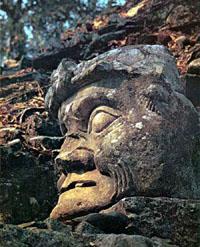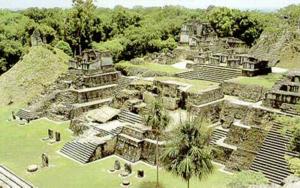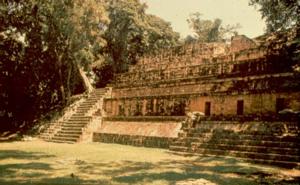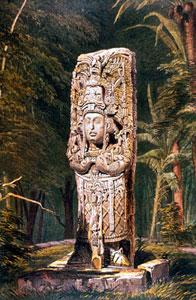 Spanish explorers came across the ruins of Copán in the 16th century. The site was rediscovered in 1839, and several of its monuments were restored between 1936 and 1950.
Spanish explorers came across the ruins of Copán in the 16th century. The site was rediscovered in 1839, and several of its monuments were restored between 1936 and 1950.The intellectual centre of the Maya empire, flourished 426 - 821, abandoned by about 1200.
Copán was located in today's western Honduras close to the border of Guatemala. It had a population of about 200,000 people.
 Spanish explorers came across the ruins of Copán in the 16th century. The site was rediscovered in 1839, and several of its monuments were restored between 1936 and 1950.
Spanish explorers came across the ruins of Copán in the 16th century. The site was rediscovered in 1839, and several of its monuments were restored between 1936 and 1950.
Copán ranks among the most important of Maya sites for many reasons, but foremost among these is its vast number of hieroglyphic texts. For its relative small size (many other sites in the Maya lowlands are physically larger), the amount of inscribed materials at Copán is truly astounding, suggesting that in some way the elite culture of this ancient kingdom was particularly interested in literate culture and whatever that entailed.
The large number of texts at Copán, nearly all on large stone stelae or altars, have given scholars a large amount of texts to be compared and studied, and these texts have played a significant role in the overall effort to break the Maya code. The decipherment of Maya hieroglyphs is still advancing rapidly, although much remains to be done at Copán and other sites. At present some 60 to 70 percent of the Maya inscriptions can be read with a reasonable degree of accuracy.
D. Stewart (1996) Hieroglyphs and History at Copán.
http://www.peabody.harvard.edu/Copan/text.html (accessed 28 January 2004)




